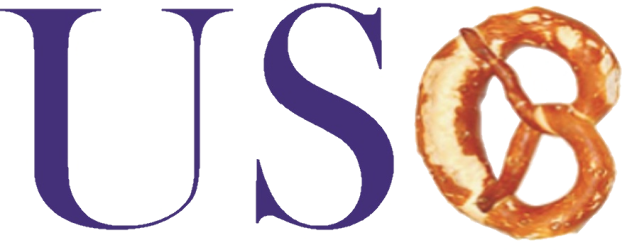- Location: To be eligible for a a USDA loan, a customer or home owner must certanly be thinking of buying (or already real time) in A usda-eligible area – typically rural communities and far-flung exurban areas from the sides of larger towns and cities. If you reside within effortless commuting distance of major hub towns and cities such as for instance san francisco bay area, Chicago, or Boston, you likely don’t qualify.
- Citizenship or Residency reputation: USDA-eligible home owners and borrowers must certanly be U.S. Residents or permanent residents, or hold specific long-lasting visas.
- Federal Program Eligibility: USDA loan and grant recipients can not be “suspended or debarred from involvement in federal programs” as a result of unlawful beliefs or previous fraudulent task.
- Credit danger: The USDA that is ideal borrower a FICO rating above 640. Borrowers with reduced scores might need to offer extra information before qualifying and tend to be very likely to face higher interest levels. The chances of qualification falls somewhat as credit danger increases. Current delinquencies (12 months or less) can really jeopardize borrowers’ applications. Nevertheless, according to loan provider policies, borrowers with bad or restricted credit can often qualify by showing longstanding prompt payment habits for responsibilities such as for example lease and resources.
- Steady Income: perfect borrowers can show income that is steady long expanses of time – two years or much much longer. But, exceptions could be created for borrowers involved with unpredictable or boom-and-bust tasks, such as for instance agriculture.
- Housing Ratio: you generally need to keep your housing ratio under 29% if you have fair to good credit,. Which means your total payment that is monthlyprincipal, interest, house hazard insurance coverage, homeloan payment security insurance coverage, taxes) can’t exceed 29% of one’s earnings. When you have exceptional credit, many loan providers will waive the 29% guideline, offered they deem your housing ratio fair.
- Financial obligation Ratio: Your home debt ratio – the share that is total of debt burden as a portion of one’s income – typically can’t surpass 41percent. Once more, exceptions is created for borrowers with exemplary credit.
What you should Qualify
Through the USDA application for the loan procedure, you’ll need certainly to offer:
- A driver’s permit, passport, army ID, or any other authorized government-issued ID
- Pay stubs (or copies) for at the least 2 months prior
- Money statements, including W-2 types and 1099 types, heading back three tax years
- Proof of bank and investment earnings (statements) heading back at the least 8 weeks
- Proof of at the very least couple of years of constant work (taxation kinds should suffice)
- If you’re self-employed, an income and loss declaration for the present income tax 12 months (to provide)
According to your private circumstances, credit rating, the mortgage for which applying that is you’re along with other facets, additional paperwork are necessary.
Closing Expenses
Like mortgage loans that are most, USDA loans carry a slew of shutting costs. The bullets here are meant only as a guide that is general. Expenses may differ commonly by location, market conditions, advance payment size (if any), and loan provider policies. Nonetheless, you ought to prepare to pay for some or all the closing that is following in your USDA loan:
- Mortgage Insurance: USDA loans need an insurance that is upfront corresponding to 1.00percent of this financed amount – for example, $2,000 for a $200,000 loan. Ongoing yearly home loan insurance coverage premiums add up to 0.35percent associated with financed amount are then necessary for living associated with the loan. The premium that is upfront be rolled to the loan at closing.
- Prepaid Property Taxes: You’re generally necessary to prepay home taxes set to accrue in the middle of your closing date while the after home tax date that is due. According to whenever closing falls, the home’s value, and tax that is local, this may total up to hundreds and even 1000s of dollars.
- Prepaid Hazard Insurance: You’re frequently necessary to prepay very first year’s homeowners insurance fees. According to your home’s location and value, this could consist of a few hundred to some thousand bucks. Day it’s customary to pay this item outside closing, before closing.
- Property Survey: you could be asked to commission home study. More often than not, the study will undoubtedly be what’s referred to as a home loan study, that will be a fairly perfunctory exercise that combs the real history of home information for proof inaccuracies and unfavorable claims. A location survey is required under some circumstances. This really is an on-site survey that locates the particular place of every structures, easements, study monuments, as well as other essential features. Whenever deal involves a brand new construction home or current subdivision, a far more comprehensive boundary study is needed. Boundary studies are on-location exams that correctly map the property’s contours and parameters while pinpointing possible signs and symptoms of unfavorable encroachment or use. Home loan studies typically cost not so much than $500. Boundary surveys can price a few thousand bucks – but, once again, they’re not often necessary.
- Property Appraisal: Before agreeing to originate that loan, loan providers need home appraisals to validate that the house may be worth the seller’s price that is asking to lessen the possibility of loss in case of property foreclosure. For USDA direct loans, the USDA commissions the appraisal by itself account. Appraisals usually cost not so much than $500.
- Residence Inspection: Though theoretically optional, inspection reports are highly recommended, particularly for purchasers of older domiciles. Inspectors completely examine any habitable structures from the home, like the primary household and outbuildings, to spot possible safety dangers and products needing repair that is immediate. Inspections often cost not so much than $500, though they could be pricier for larger houses and properties with numerous outbuildings.
- Title Re Re Search: a name search examines the property’s chain of title ownership that is( from the initial platting or subdivision before the present. This helps to ensure that the vendor is their legal rights to record the home on the market and reduces the possibility of a claim up against the property later on. Title queries typically cost a lower amount than $400.
- Title Insurance: Title insurance coverage, that might protect the expense of a name search, provides financial security against problems uncovered by the name search, such as for instance old liens and forgotten covenants. In addition it provides protection that is ongoing claims in the home. The expense of name insurance coverage can differ significantly, nonetheless it’s smart to budget at minimum $1,000 (one-time, compensated at closing) when it comes to cost.
- Recording and Transfer: The sale is n’t official until it is recorded because of the appropriate authorities – often the city or county housing division. This typically involves two split charges: recording fees and transfer stamps. Together, these things typically cost a hundred or so bucks, although the exact quantity can differ notably according to the signature loans austin tx location and home value.
- Flood Determinations and Environmental Assessments: even though you don’t inhabit a location with apparent flooding risk, including the bank of the river, you’ll need certainly to payment a low-cost flood determination to get your property on present flooding area maps and discover whether flooding insurance coverage is important. This often costs not as much as $100, but ongoing flooding monitoring (and, if necessary, flood insurance) can add on towards the long-term price. Other styles of ecological assessments are expected in specific areas – for example, fire risk assessments in components of the western united states of america.
- Origination Fee: Some loan providers charge origination costs to simplify the slew of small costs and costs that often accompany closing: attorney’s charges, document costs, courier costs, escrow fees, and even more. Origination charges often surpass 1% regarding the price, but you can find appropriate and customary restrictions on their size and composition. When in question, pose a question to your loan provider to spell out at length what’s incorporated into your origination cost. Don’t be afraid to call them down on questionable line products.
Avoiding away from Pocket Closing Costs many USDA borrowers can entirely reduce or expel away from pocket closing expenses. Some cost-reduction or -elimination methods are unique towards the USDA loan program, while some are offered to wider swathes regarding the population that is homebuying
- Roll Them to the Loan: when your house appraises for longer than its price tag, the USDA loan system lets you fund your closing costs – put another way, to move them to your loan principal. It is possible to just fund the essential difference between your home’s price tag as well as its appraised value. As an example, if you place in a offer for $150,000 plus the house appraises for $155,000, it is possible to fund closing expenses up to $5,000. Any overages nevertheless have to be settled of pocket.
- Have the Seller to pay for: the vendor is allowed to spend as much as 6% associated with home’s price tag toward shutting costs – up to $12,000 for a $200,000 home, as an example. That’s often plenty of to cover closing expenses. This plan is particularly typical in buyers’ markets, where sellers that are desperate prepared to spend the 1000s of dollars to guarantee the purchase passes through. In hotter markets, vendors are generally less prepared to play along.
- Get a present from Friends or Family: You’re not permitted to borrow cash to pay for your closing expenses. But, you are able to accept a present that doesn’t have to be paid back. Such gift ideas typically result from buddies or family relations and can’t accrue interest.
- Obtain a Lender Credit: the financial institution often credits a percentage regarding the price back again to the customer via discount points, that are tiny pieces associated with the loan principal (usually 1%, though discount points could be put into half- and quarter-points). According to just how they’re used, discount points can offset component or every one of the loan’s closing expenses. Nonetheless, there’s a tradeoff: Each discount point raises the loan’s price by 0.25per cent, producing greater monthly obligations and increasing the loan’s long-term price. This can be an option that is good you’re quick on money at this time, but anticipate your revenue to go up in the long run or even refinance your loan reasonably quickly.

